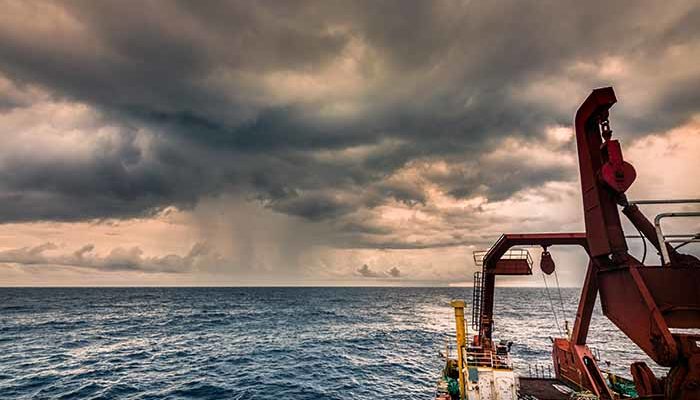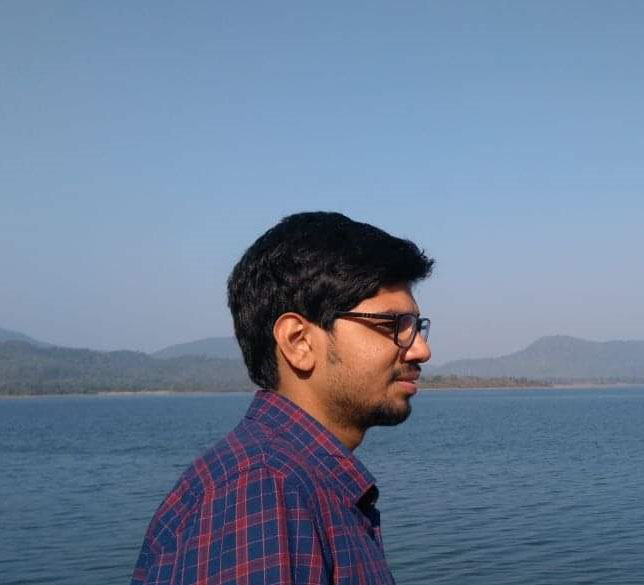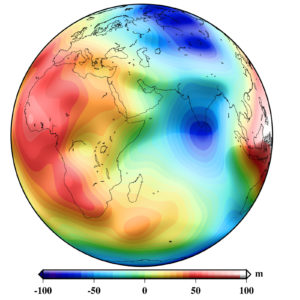
 The Indian Ocean Geoid Low is an enigmatic phenomenon in geodynamics. Many brain-storming hypotheses have been proposed in the last few decades to explain this geoid low. One popular idea argues that the high density lower mantle slabs contribute to this geoid low. Recent discoveries have shown that low-density anomalies from the African LLSVP region could have a more substantial influence on creating the geoid low. In this week’s news and views, Debanjan Pal, a PhD student at the Indian Institute of Science, Bangalore, discusses the relative contribution of different parts of the mantle in forming IOGL.
The Indian Ocean Geoid Low is an enigmatic phenomenon in geodynamics. Many brain-storming hypotheses have been proposed in the last few decades to explain this geoid low. One popular idea argues that the high density lower mantle slabs contribute to this geoid low. Recent discoveries have shown that low-density anomalies from the African LLSVP region could have a more substantial influence on creating the geoid low. In this week’s news and views, Debanjan Pal, a PhD student at the Indian Institute of Science, Bangalore, discusses the relative contribution of different parts of the mantle in forming IOGL.
What is Indian Ocean geoid low?

Observed Indian ocean geoid low (Chambat et al., 2010).
In the south of the Indian Peninsula, the geoid trough reaches to an amplitude of -100m, making it the lowest geoid anomaly on Earth, also known as the Indian Ocean geoid low (IOGL). This geoid low sits between two global geoid highs over Africa and the Pacific. For years various studies have been done to illuminate the black box causing that geoid low. Negi et al. (1987) proposed that downward deflection in the core-mantle boundary beneath the Indian Ocean can cause this anomalous low, while Nerlich et al. (2016) used time-dependent mantle convection dependent models and showed that subducted back-arc basin could be the potential reason. Using tomography models, Ghosh et al. (2017) showed that hot and low-density anomalies beneath the north of the Indian Ocean alone could contribute to this low geoid. Using synthetic density models, a new study by Steinberger et al. (2021) proposed that hot upper to middle mantle material and lower mantle slabs contribute to this low geoid. To this date, this area has been under the spectrum of scientific research to elucidate the contribution of hot material and the lower mantle slabs causing this low.
Do the lower mantle slabs contribute to IOGL?
Geoid anomalies result from summed contributions from internal density distribution, surface deflection, and core-mantle boundary deflection. Using tomography models, the current study by Ghosh and Pal (2022) calculated the geoid due to only negative density anomaly in the upper mantle is about -700m. Due to the same negative density anomaly, the surface deflection is about +600m. Combining these two effects can produce a net geoid anomaly of -100m in the Indian Ocean. The geoid signal from the core-mantle boundary is diffused in this region. Singals from density and surface deflection indicate that lower mantle slab do not play any significant role in producing this geoid low.
Geoid calculated between spherical harmonic degrees 4 to 12 is sensitive to subducted slabs in the mantle (Hager, 1984). When the wavelengths below 4 and above 12 are filtered out, the amplitude of the geoid trough is significantly reduced. Therefore, the hot, low-density anomaly beneath this region contributes to this lowest geoid anomaly with no significance of subducting slabs in the lower mantle.
References Chambat, F., Ricard, Y., Valette, B., 2010. Flattening of the earth: further from hydrostaticity than previously estimated Geophys. J. Int., 183, pp. 727-732. Ghosh, A., Pal, D., 2022. Do lower mantle slabs contribute in generating the Indian Ocean Geoid Low?, Tectonophysics, 822, https://doi.org/10.1016/j.tecto.2021.229176. Ghosh, A., Thyagarajulu, G., Steinberger, B., 2017. The importance of upper mantle heterogeneity in generating the Indian Ocean geoid low. Geophys. Res. Lett. 44, 9707-9715. Hager, B.H., 1984. Subducted slabs and the geoid: Constraints on mantle rheology and flow. J. Geophys. Res. 89, 6003-6015. Negi, J.G., Thakur, N.K., Agrawal, P.K., 1987. Can depression of the coremantle interface causes coincident Magsat and geoidal lows of the Central Indian Ocean? Physics of the Earth and Planetary Interiors, 45, 68-74. Nerlich, R., Colli, L., Ghelichkhan, S., Schuberth, B., Bunge, H.P., 2016. Constraining central Neo-Tethys Ocean reconstructions with mantle convec- tion models. Geophys. Res. Lett. 43, 9595-9603. Steinberger, B., Rathnayake, S., Kendall, E., 2021. The Indian Ocean Geoid Low at a plume-slab overpass. Tectonophysics 817. https://doi.org/10.1016/j.tecto.2021.229037. Rao, B. P., and Kumar, M. R., 2014. Seismic evidence for slab grave- yards atop the core mantle boundary beneath the Indian Ocean Geoid Low. Physics of the Earth and Planetary Interiors,236, 52-59.
